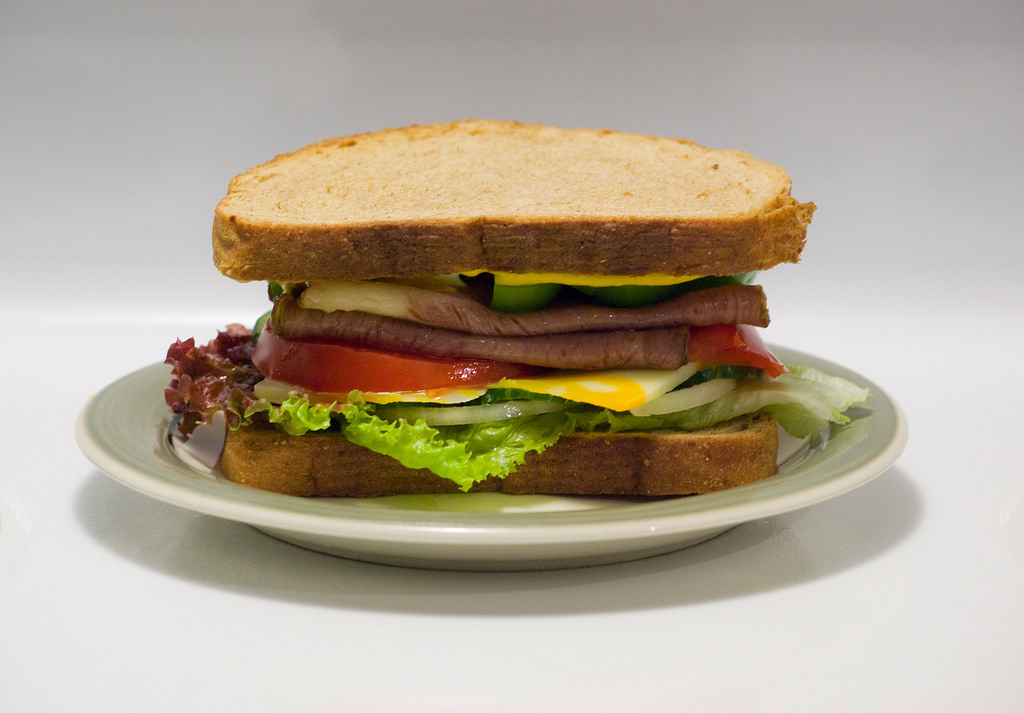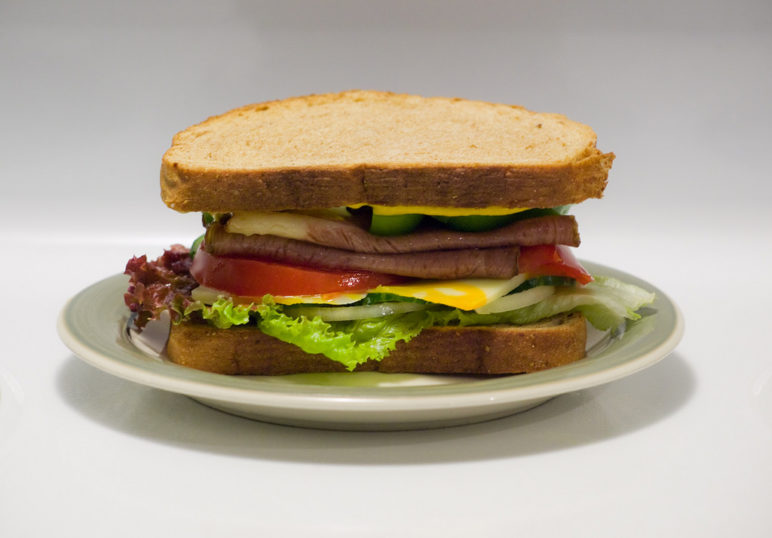The gist: Drew Westen has said, “Wherever you’re heading, ideas provide the roadmap, but emotions provide the fuel.”
In his acclaimed new book, The Political Brain, Westen shows, through careful scientific observation, that emotion is one of the most potent sources of motivation that drives human behavior (there’s a reason they share their Latin root). “[The brain] is not a dispassionate calculating machine, objectively searching for the right facts, figures, and policies to make a reasoned decision,” he writes. In fact, more often than not, Westen shows, we make decisions with our “gut,” our “heart,” via unconscious networks of associations.
We recommend the book. Here’s our take in a nutshell.
Flashcard tips:
- Make a Data Sandwich (hold the baloney)
- Fire Up the Networks
- Remember “The Little Engine that Could”
Make a data sandwich (hold the baloney)
Nobody likes their data plain. More appetizing — and powerful — are data served up in a sandwich between compelling narratives and personal experiences that illustrate our core values and stir emotions. Here’s the recipe: 1) start with an emotional appeal — why it matters to our families, our future; 2) fill with relevant data and policy solutions; 3) end on another emotional appeal.
Authenticity is key — that means no baloney in this sandwich. Emotional appeals don’t have to be insincere or cheesy. Speak from the heart, stand proudly by the principles and values that guide your thinking.
(Andy Grow at Climate Solutions first got me thinking about this kind of communications “sandwich.” Thanks, Andy!)
Example: Barack Obama presenting his climate policy recommendations in 2007

Barack Obama by Justin Sloan used under CC BY-NC-ND 2.0
1) First, Obama opens with an emotional appeal — a narrative that threads together deeply emotional historical triumphs (national unity during the Cold War) and personal triumphs (college educations for GIs) and deeply-held values — opportunity, ingenuity, pride — as well as immediate priorities for families – jobs, industry, affordable energy.
In meeting the challenges of earlier generations, we didn’t just end a costly war or beat the Soviets to the moon – we also unleashed opportunities we had never dreamed of. The GI Bill sent an entire generation of Americans – including my grandfather – to college and then on to the middle-class. Legions of scientists and engineers emerged from our race to space whose discoveries and innovations have forever changed the world.
This same opportunity exists today. That’s why my plan isn’t just about making dirty energy expensive, it’s about making clean energy affordable – a project that will create millions of new jobs and entire new industries right here in America.
2) Then he gets into the specifics about his policy solution and the numbers:
The first step in doing this is to phase out a carbon-based economy that’s causing our changing climate. As President, I will set a hard cap on all carbon emissions at a level that scientists say is necessary to curb global warming – an 80% reduction by 2050. To ensure this isn’t just talk, I will also commit to interim targets toward this goal in 2020, 2030, and 2040. These reductions will start immediately, and we’ll continue to follow the recommendations of top scientists to ensure that our targets are strong enough to meet the challenge we face.
In addition to this cap, all polluters will have to pay based on the amount of pollution they release into the sky. The market will set the price, but unlike the other cap-and-trade proposals that have been offered in this race, no business will be allowed to emit any greenhouses gases for free.
3) He ends with another emotional appeal — this time to our sense of right and wrong, our values, and the kitchen table issues like the economy, energy prices and jobs:
Businesses don’t own the sky, the public does, and if we want them to stop polluting it, we have to put a price on all pollution. It’s time to make the cleaner way of doing business the more profitable way of doing business.
There is no doubt that this transition will be costly in the short-term. To make it easier, we will provide assistance to Americans who need help with their energy bills. We’ll help families make their homes more energy efficient, and we’ll help workers and factories retool their facilities so they can compete and thrive in a clean energy economy. And once we make America more energy efficient and start producing more renewable energy, we will save money and bring energy costs down in the long-run. But we must act now.
Fire up the networks
 Not the TV networks! The bundles of ideas, feelings, and images linked together in our brains. The right words can activate positive networks, connecting data to good feelings — and giving policies a fighting neurological chance (and not just a logical one).
Not the TV networks! The bundles of ideas, feelings, and images linked together in our brains. The right words can activate positive networks, connecting data to good feelings — and giving policies a fighting neurological chance (and not just a logical one).
Example: Drew Westen believes we do a disservice – to ourselves and the earth – by using words like “environment” and “environmentalism” in our communications. Why? They’re abstract, emotionally uninspiring, and they carry lots of baggage. In fact, thanks to “branding” by opponents of environmental protection, these terms fire up a network of negative associations that includes “effete, tree-hugging, and Volvo driving,” and images of people and political figures who do not share the values of many (“regular”) people.
“We should be talking about protecting the land of our forefathers, the air we breathe, the water our children drink, the streams we fish, the game we hunt, the trails we climb with our families, the gracious majesty of our landscape, and God’s earth,” writes Westen. “These are evocative images, some for most [everyone], and others for distinct emotional constituencies.”
Using these terms we’re able to communicate exactly the same thing as “the environment,” explains Westen, but these images fire up a network of associations in our brains that are positive. These words and images inspire a deeply emotional response – a good one – connected to the things that we care about most: our families, our childhood, our health, our values, the places we live and recreate, our hobbies, our faith – rather than reinforcing a negative, narrow, or partisan response.
Remember “The Little Engine that Could”
 Laundry lists are lackluster. But a vivid narrative or personal experience — with characters, images, a resolution, and a moral lesson — gives policy recommendations, facts, figures, and data a memorable and emotionally compelling context.
Laundry lists are lackluster. But a vivid narrative or personal experience — with characters, images, a resolution, and a moral lesson — gives policy recommendations, facts, figures, and data a memorable and emotionally compelling context.
Our brains are accustomed to taking in new information and ideas through familiar narrative structures. Spell out the problem and offer solutions in a story, with concrete evidence and personal details, and our stories are likely to be told and retold.
Example: Washington State Representative Jay Inslee on U.S. Congressional energy tax package.
We have remained addicted to oil. The price of gas has doubled. We are continuing on a course of being insecure because we are wrapped around the axle of oil because of tax subsidies. And it’s time to turn course.
We don’t think the status quo is acceptable. We don’t think that’s good enough. We believe that Americans are smart enough, creative enough, and innovative enough to launch a new “Apollo Project” in energy, so that we can do for energy what Kennedy did for space. And this bill is step one in that regard.
All over this country Americans are inventing a new energy future for us.
A solar energy company in Florida, with clean solar thermal power; The Nanosolar company that made the first commercial sale of thin cell photovoltaics last month; The Imperium Renewables company in my state of Washington. With biodiesel that powered the first jet airline flight for Virgin Air last weekend; The Alta Rock Energy company, the first enhanced geothermal company now growing in Washington; The Janeke Company which is opening up a new wind blade construction project…
We’re ready to launch a rocket of clean-energy innovation in this country, but opponents of these clean-energy investments are putting a hold on the countdown. And we’re about two seconds away from having a burst of economic growth in this county. If they allow these tax breaks to expire, it’ll strangle the birth of new industries.
In the last several weeks I’ve gotten scores of phone calls from people all over the country ready for these new companies to start. But we’re strangling them. It’s time to launch a clean energy revolution.
The science behind The Political Brain:
 In the final months of the 2004 presidential election, Drew Westen and two colleagues put together a research team to study what happens in the brain as staunch political partisans (who constitute about 80 percent of the electorate) process new political information. They studied the brains of 15 committed Democrats and 15 Republicans, scanning their brains for activity as they read a series of contradictory statements. What the research team hoped to learn was how the human brain negotiates conflicts between data and desire — the facts at hand and what they want to believe is true because it fits their pre-existing stance.
In the final months of the 2004 presidential election, Drew Westen and two colleagues put together a research team to study what happens in the brain as staunch political partisans (who constitute about 80 percent of the electorate) process new political information. They studied the brains of 15 committed Democrats and 15 Republicans, scanning their brains for activity as they read a series of contradictory statements. What the research team hoped to learn was how the human brain negotiates conflicts between data and desire — the facts at hand and what they want to believe is true because it fits their pre-existing stance.
“The goal was to create a head-to-head conflict between the constraints on belief imposed by reason and evidence (data showing the candidate had done something inconsistent, dishonest, or unethical) and the constraints imposed by emotion or worldview (strong positive feelings toward the parties or the candidates, for example),” writes Westen.
Tracing the neural footprints of partisans, Westen’s research team observed:
- When partisans face threatening information, they are likely to “reason” to emotionally biased conclusions. The brain registers conflict between data and desire and begins to search for ways to turn off the spigot of unpleasant emotion. The brain largely succeeded in this effort, as partisans mostly denied that they had perceived any conflict between their own candidates’ words and deeds;
- Most significantly, once partisans had found a way to “reason” to false conclusions, not only did neural circuits involved in negative emotions turn off, but circuits involved in positive emotions turned on. The brain worked overtime to feel good, activating reward circuits that give partisans a jolt of positive reinforcement.
- All of this happens quickly. In an instant — and largely unconsciously — our brain is wired to shut down uncomfortable conclusions and give us a little chemical boost for neutralizing emotional distress and reinforcing our previously-held beliefs!
About Drew Westen:
Drew Westen received his B.A. at Harvard, an M.A. in Social and Political Thought at the University of Sussex (England), and his Ph.D. in Clinical Psychology at the University of Michigan, where he subsequently taught for six years. For several years he was Chief Psychologist at Cambridge Hospital and Associate Professor at Harvard Medical School. He is currently a guest Blogger on the Huffington Post, a commentator on NPR’s “All Things Considered” and the founder of Westen Strategies, a political and corporate consulting firm. (Info from www.thepoliticalbrain.com).











Comments